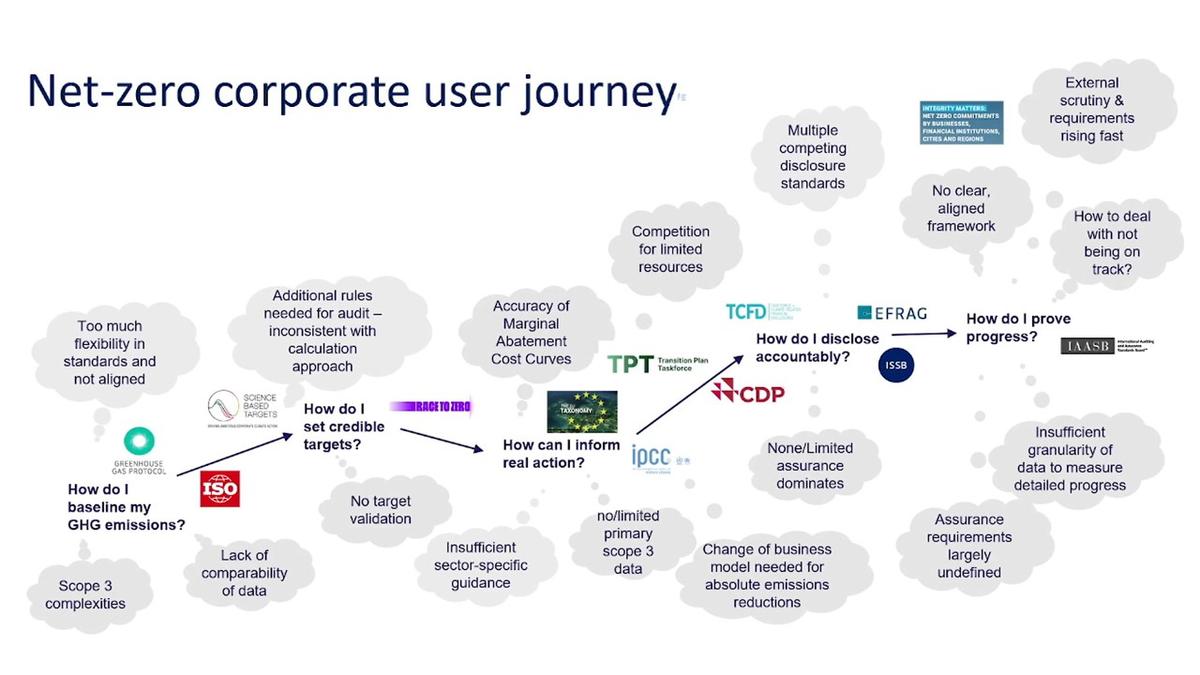
Another year and another COP completed. Proceedings at COP27 in Sham El Sheikh, Egypt wrapped up on November 20, two days later than planned. So, with all that extra work, was there an agreement made that ensures we stay within our 1.5°C warming limit? Or was this a case of diplomatic hot air to go with a warming planet? We outlined in our COP27 preview the level of progress on climate commitments could determine the success of this years’ event. More specifically, we expected an array of issues, and the progress made on those issues, to be the focus of COP27. How did they play out?
Loss and damage
Adapting to the climate crisis will come at a significant upfront cost for developing nations. Estimates range between US$160 - 340 billion by 2030. A historic climate finance decision was made to establish a loss and damage fund, particularly for nations most vulnerable to the climate crisis. This would be funded by high-emissions nations to help bring about climate equity. While this was the headline achievement from COP27, many details are yet to be worked out. Work is planned over coming months around how the fund might work, including who will be paying into the fund, how often payments would be made, or how much the payments would be.
Phasing out fossil fuels
Unfortunately, text from COP27 did not make a measurable or date-constrained commitment to phasing out fossil fuels or fossil fuel subsidies. The COP27 deal largely repeats wording from the Glasgow deal, to accelerate "efforts towards the phasedown of unabated coal power and phase-out of inefficient fossil fuel subsidies." The new deal also makes reference to low-emissions energy. This raised concerns that a loophole has been created for increased natural gas production, which produces less emissions than coal or oil. In some positive news, Indonesia committed to shutting down coal power plants to ensure power sector emissions peak by 2030. This will be funded by wealthy nations promising $10 billion over three years, to be matched by seven international banks.
2030 methane targets
Methane is responsible for around a quarter of the global temperature increase since the industrial revolution. To help address this, the Global Methane Pledge (GMP) was launched at COP26, with just over 100 countries committing to reducing global methane emissions by at least 30 per cent by 2030 from 2020 levels. There are now 150 countries on board, and more than 50 countries have developed or are developing national methane reduction plans. As a part of a new program to encourage methane reductions, a public database of global methane leaks detected by space satellites will be launched. The Methane Alert and Response System (MARS) builds on the pledge to cut methane emissions. The MARS system will use existing satellite networks to spot methane plumes, estimate their size, and identify the responsible company or government. The relevant information will then be shared with those responsible for the leaks so the situation can be remedied. In addition to this, the United States and the European Union (EU) jointly convened a session on methane to highlight the progress and implementation of methane reduction plans.
Keeping 1.5°C alive
The notion of keeping 1.5°C alive was at risk of disappearing under the pressure of negotiations with a vested interest in the status quo. Over 630 fossil fuel lobbyists attended COP27, an increase from 503 at COP26, and their influence was felt. Negotiations slowed, with some petrostates such as China, Russia, Brazil, Saudi Arabia and Iran all pushing back on commitments to phase out fossil fuels. The 1.5 target remains, just. The EU threatened to leave negotiations if the final agreement would not “keep 1.5 alive”. The 1.5 degree target is driven by the environmental limits of the earth. While the difference between 1.5 and 2 degrees does not sound like much, the impacts that overshooting to 2 degrees will have on earth and societal systems are well documented.
Food security, affordability, and lower emissions
Some progress was made concerning agricultural and food security. This included a four-year plan, and a new initiative to scale up finance to transform agriculture by 2030. The US Department of Agriculture has invested $500 million in methane reduction projects and up to $90 million for domestic food loss and waste reduction. The Green Climate Fund, in partnership with other entities, approved project preparation funding to leverage up to $400 million in financing to transition dairy systems to lower emissions systems in Kenya, Rwanda, Tanzania and Uganda.
Toitū on the ground at COP27
Dr Belinda Mathers, General Manager of Technical, was on the ground at COP27 to ensure Toitū is keeping in line with best global practice, and spoke as a panelist at multiple sessions. She recently discussed her experience with journalist Rod Oram, who was also in attendance. Amongst other things, they discussed the impacts of COP27 on New Zealand businesses and the outcomes from Sharm El-Sheikh.
"The timetable we are working to has been set by the living systems of the Earth"- Rod Oram
Of note was the astonishing pace and progress being made in some sectors. For example, carbon free steelmaking was fanciful thinking at COP26. Now, Volvo are committing to a model that uses green hydrogen-built steel. There is also progress around Sustainable Aviation Fuels that are not bio-based. Instead, synthetic molecules from capturing technologies are used. Some SAF plants will still be built using too much bio resource than is ideal. However, this provides a good example of how getting everyone together in the value chain can help derive a better climate solution.
What will this mean for NZ businesses?
We need to move away from making marginal reductions (such as reductions in emissions intensity, thinking the job is done with a few minor changes) or making claims that might be perceived as greenwash as we ensure true business transformation. Such transformation is needed to meet the goals of the Paris Agreement. It is both vital and exciting that businesses will be a part of the climate solution. As well as offering numerous opportunities, the reality is that not taking climate action means a decreased likelihood of being able to successfully operate in a low-carbon economy. Figure 1 is an adapted slide from Nestlé which outlines the net-zero corporate experience. While initial action can be difficult, particularly around understanding requirements and disclosing accountability, it is entirely possible to establish climate targets that will result in meaningful action. That is what we can expect in Aotearoa following COP27.

Figure 1: Nestlé slide outlining the net-zero corporate pathway. Source: Nestlé (adapted)
Further to this, tackling climate change must involve a just transition for workers. Some workers will need to be re-skilled as business changes, and it is important that these workers are not left behind. Highly-vulnerable communities (including people losing homes due to climate impacts), and the voice of nature must also be at the forefront of climate efforts.
Summary: Was COP27 a success?
The big headline from the COP27 negotiations was establishing a loss and damages fund. However, it is light on detail and we don’t know who will be making payments, or how often payments will be made, or how much these payment will be. There’s no phasing out of coal and the fossil fuel lobby flexed their muscle. Keeping 1.5 alive nearly vanished. While these are all cause for concern, there were still reasons for optimism. The loss and damage fund was a big step; developed nations admitting the harm they have caused is indeed progress.
Partnerships and ambition are increasing around methane reductions. Countries like Indonesia are committed to phasing out coal. An enormous amount of work is happening in the corporate world to reduce emissions, collaborate through value chains and within sectors, and to harmonise the myriad of standards that exist. We know there is still a lot of work to do, and that work needs to be done at speed. It is not something that can be achieved in isolation. Working with businesses and government entities alike brings an abundance of opportunities to collaborate and give ourselves the best chance of achieving our climate goals. We look forward to doing that with you in 2023 and beyond.